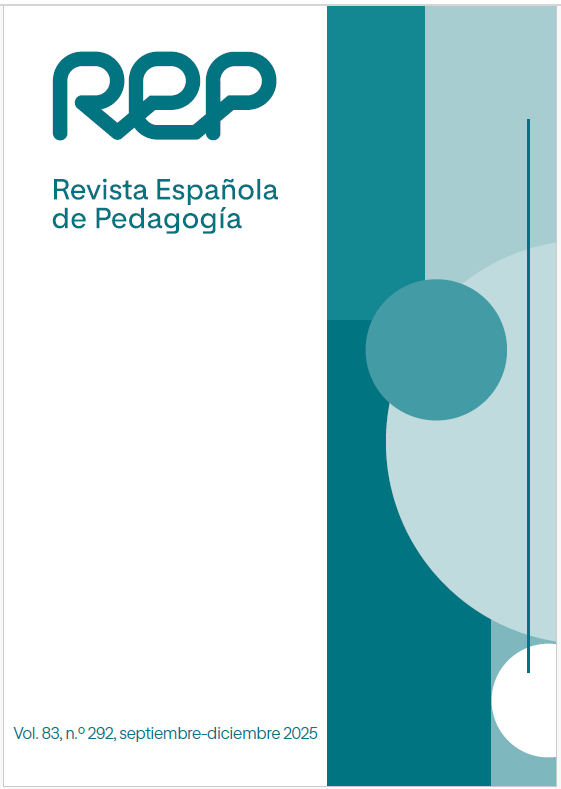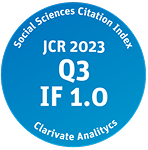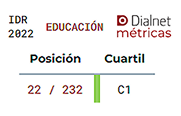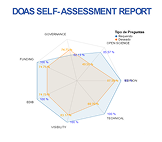Didactic model with interactive software Genially and Kahoot for critical reading comprehension for primary education students
DOI:
https://doi.org/10.9781/rep.2025.385Keywords:
basic education, educational technology, learning, reading instruction, teaching, teaching materialsAbstract
In the current context of primary education, where the digital divide represents a significant challenge, a didactic model based on the use of interactive software —specifically Genially and Kahoot—, was proposed to enhance critical reading comprehension. The main objective was to design a proposal that, through digital tools, would promote the development of reading skills at the literal, inferential, and critical levels. To this end, a prospective descriptive research was carried out, with a non-experimental approach, which included the development and validation of instruments to measure the usability of the software and the reading comprehension of the students. The execution of the model was structured in three phases: design and analysis of content, development of interactive materials and organization and application of activities through digital platforms. The results indicated that the selected resources encouraged active participation and critical thinking, integrating didactic strategies such as pre-reading activities, guided readings and gamified assessments. The validation by experts reflected a high valuation of the proposed model, highlighting its flexibility and adaptability to various educational contexts. The discussion underscored the importance of pedagogical mediation and teacher training to maximize the impact of the use of Genially and Kahoot, also pointing out the limitations associated with technological dependence and the need to guarantee equity in access. It is concluded that the didactic model designed represents an innovative alternative for improving critical reading comprehension in primary school students, as long as it is accompanied by balanced pedagogical strategies and adequate training, with special attention to overcoming the technological and contextual barriers that may arise.
Downloads
References
Al-Mutairi, N. M., & Bin, H. F. (2021). Connectivism Learning Theory to Enhance Higher Education in the Context of COVID-19 Pandemic. International Journal of Educational Sciences, 35(1-3), 29-39. https://doi.org/10.31901/24566322.2021/35.1-3.1197
Balaskas, S., Zotos, C., Koutroumani, M., & Rigou, M. (2023). Effectiveness of GBL in the Engagement, Motivation, and Satisfaction of 6th Grade Pupils: A Kahoot! Approach. Education Sciences, 13(12), 1-13. https://doi.org/10.3390/educsci13121214
Cabrera-Solano, P. (2022). Game-Based Learning in Higher Education: The Pedagogical Effect of Genially Games in English as a Foreign Language Instruction. International Journal of Educational Methodology, 8(4), 719-729. https://doi.org/10.12973/ijem.8.4.719
Calderón, M. Y., Flores, G. S., Ruiz, A., & Castillo, S. E. (2022). Gamificación en la compresión lectora de los estudiantes en tiempos de pandemia en Perú. Revista de Ciencias Sociales, 28(Especial 5), 63-74. https://doi.org/10.31876/rcs.v28i.38145
Castillo-Cuesta, L., Cabrera-Solano, P. & Ochoa-Cueva, C. (2024). Using Genially and Kahoot for Implementing CLIL in EFL Higher Education. International Journal of Learning, Teaching and Educational Research. Teaching and Educational Research, 23(7), 340-354. https://doi.org/10.26803/ijlter.23.7.13
Çoban, M., Topuz, A., Karabulut, A., & Chiu, T. (2024). Comparing Realities: A Study on the Impact of Virtual Reality versus Paper-Based Reading on Higher Education Students' Comprehension Skills. Participatory Educational Research, 11 (4, 19). https://doi.org/10.17275/per.24.47.11.4
Corbett, F., & Spinello, E. (2020). Connectivism and leadership: harnessing a learning theory for the digital age to redefine leadership in the twenty-first century. Heliyon, 6(1), 1-9. https://doi.org/10.1016/j.heliyon.2020.e03250
Duke, N. K., & Cartwright, K. B. (2021). The Science of Reading Progresses: Communicating Advances Beyond the Simple View of Reading. Reading Research Quarterly, 56(S1), S25-S44. https://doi.org/10.1002/rrq.411
Escobar-Teran, F., Zapata, J., Briones, F., Rosero, M. & Portilla, J. (2025). Use of ICTs to confront climate change: analysis and perspectives. Frontiers in Climate, 7. https://doi.org/10.3389/fclim.2025.1436616.
Gnambs, T., & Lenhard, W. (2024). Remote Testing of Reading Comprehension in 8-Year-Old Children: Mode and Setting Effects. Assessment, 31(2), 248-262. https://doi.org/10.1177/10731911231159369
Gutiérrez, R. (2022). Influence of Cognitive Reading Strategies for Improving Comprehension Skills in Primary Education Students. Investigaciones Sobre Lectura, 17(2), 77–92. https://doi.org/10.24310/isl.vi18.15140
Huntington, B., Goulding, J., & Pitchford, N. J. (2023). Pedagogical features of interactive apps for effective learning of foundational skills. British Journal of Educational Technology, 54(5), 1273-1291. https://doi.org/10.1111/bjet.13317
Joshi, D. R., Khadka, J., Khanal, B., & Adhikari, K. P. (2024). Learners’ Expectations towards Virtual Learning and its Effect on Mathematics Performance. International Journal of Instruction, 17(1), 733-754. https://doi.org/10.29333/iji.2024.17138a
Kambach, A. E., & Mesmer, H. A. (2024). Comprehension for Emergent Readers: Revisiting the Reading Rope. Reading Teacher, 77(6), 888-898. https://doi.org/10.1002/trtr.2315
Lesko, C., Fox, M. & Edwards, J. (2022). A framework for descriptive epidemiology. American Journal of Epidemiology, 191(12). https://doi.org/10.1093/aje/kwac115
Masneri, S., Domínguez, A., Zorrilla, M., Larrañaga, M., & Arruarte, A. (2022). Interactive, Collaborative and Multi-user Augmented Reality Applications in Primary and Secondary Education. A Systematic Review. Journal of Universal Computer Science, 28(6), 564-590. https://doi.org/10.3897/jucs.76535
Mauri-Medrano, M., González-Yubero, S., Falcón-Linares, C., & Cardoso-Moreno, M. J. (2024). Gamifying the university classroom: a comparative analysis of game dimensions through educational Escape Room and a digital board game. Frontiers in Education, 9, 1-9. https://doi.org/10.3389/feduc.2024.1354674
Misari, A. (2023). Comprensión lectora y su relación con los niveles de competencia comunicativa. Lengua y Sociedad, 22(1), 535-555. https://doi.org/10.15381/lengsoc.v22i1.23664
Nurmahanani, I. (2023). Effectiveness of a Mixed Methods-Based Literacy Program in Improving Reading Comprehension, Vocabulary Mastery, and Reading Fluency Skills of Early Grade Students. International Journal of Learning, Teaching and Educational Research, 22(7), 324-343. https://doi.org/10.26803/ijlter.22.7.17
Nurwahidah, N., Sulfasyah, S., & Rukli, R. (2023). Investigating Grade Five Teachers’ Integration of Technology in Teaching Reading Comprehension Using the TPACK Framework. Journal of Language Teaching and Research, 14(4), 927-932. https://doi.org/10.17507/jltr.1404.09
Onieva, J. L., Morales, A. F., Maqueda, E., & García, M. A. (2021). E-Textbooks vs. Print textbooks: A neuroscientific study on reading and completing exercises in primary school students. Investigaciones Sobre Lectura, 16, 1-31. https://doi.org/10.24310/isl.vi16.13683
Pérez, W. E., & Ricardo, C. T. (2022). Factores que afectan la comprensión lectora en estudiantes de educación básica y su relación con las TIC. Ikala, 27(2), 332-354. https://doi.org/10.17533/udea.ikala.v27n2a03
Ramírez, C. C., & Fernández-Reina, M. (2022). Niveles de comprensión lectora en estudiantes de tercer grado de primaria de una institución educativa en Colombia. Ikala, 27(2), 484-502. https://doi.org/10.17533/udea.ikala.v27n2a12
Romero, N., & Moncada, J. (2007). Modelo didáctico para la enseñanza de la educación ambiental en la Educación Superior Venezolana. Revista de pedagogía, 28(83), 443-476. https://ve.scielo.org/pdf/p/v28n83/art05.pdf
Rosenblatt, L. M. (1978). El modelo transaccional: La teoría transaccional de la lectura y la escritura. New York University, 1-62. https://lecturayescrituraunrn.wordpress.com/wp-content/uploads/2013/08/unidad-1-complementaria-rosemblatt.pdf
Roth, C. I., Valenzuela, F., y Orellana, P. (2020). Experience in the Use of a Digital Platform for the Practice of Reading Comprehension and Vocabulary: Perception of Elementary School Students. Investigaciones Sobre Lectura, 14. https://doi.org/10.37132/isl.v0i14.314
Sánchez, H., y Reyes, C. (2015). Prueba de Comprensión Lectora. In Universidad Ricardo Palma. Universidad Ricardo Palma. https://hdl.handle.net/20.500.14138/1081
Sánchez, S., y Pascual, M. Á. (2022). Effectiveness of a Digital Serious Game in Improving Reading Comprehension and Academic Performance. Investigaciones Sobre Lectura, 17(1), 40-66. https://doi.org/10.24310/isl.vi17.14325
Segers, E., In ’t Zandt, M., Stoep, J., Daniels, L., Roelofs, J., y Gubbels, J. (2023). Differential effects and success stories of distance education in Covid-19 lockdowns on the development of reading comprehension in primary schools. Reading and Writing, 36(2), 377-400. https://doi.org/10.1007/s11145-022-10369-0
Seifert, S., y Paleczek, L. (2022). Comparing tablet and print mode of a german reading comprehension test in grade 3: Influence of test order, gender and language. International Journal of Educational Research, 113(October 2021), 101948. https://doi.org/10.1016/j.ijer.2022.101948
Serrano-Mendizabal, M., Villalón, R., Melero, Á., e Izquierdo-Magaldi, B. (2023). Effects of two computer-based interventions on reading comprehension: Does strategy instruction matter? Computers & Education, 196(January), 104727. https://doi.org/10.1016/j.compedu.2023.104727
Tabernero, R., Álvarez, E., y Heredia, H. (2020). Reading habits and information consumption of adolescents in the digital environment. Investigaciones Sobre Lectura, 13, 72-89. https://doi.org/10.37132/isl.v0i13.302
Yirssie, S. D., Mezegebu, Y., y Admasu, S. (2023). Effects of Explicit Language Instruction on Students’ Vocabulary Retention and Reading Comprehension Skills. Ethiopian Renaissance Journal of Social Sciences and Humanities, 10(2), 17-37. https://doi.org/10.4314/erjssh.v10i2.2
Downloads
Published
-
Abstract1274
-
PDF (Español)219
-
PDF108
How to Cite
Issue
Section
License
Copyright (c) 2025 Eleodoro Huamán Baldeón, Oscar López Regalado

This work is licensed under a Creative Commons Attribution-NonCommercial 4.0 International License.

